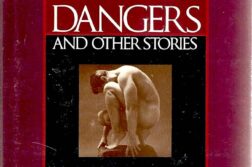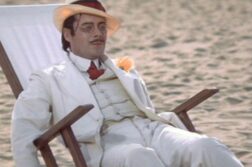IN 1970’S NEW YORK, Julius Eastman was an outrageous presence in the avant-garde performance scene as a composer, singer, and pianist. Black and openly gay, he was an outsider. He died homeless and forgotten in 1990. As the music world grapples with righting the canon, there is a resurgence of interest in this sui generis artist.
Eastman was nominated for a Grammy in 1974 for his recording of Peter Maxwell Davies’ Eight Songs for a Mad King. In 1975, as a member of the experimental S.E.M. music ensemble, Eastman tackled John Cage’s koan-like instructions for “Solo for Voice No. 8,” which read: “In a situation provided with maximum amplification (no feedback), perform a disciplined action, with any interruptions, fulfilling in whole, or in part, an obligation to others.” Eastman played his own queerness as an instrument in the performance. A Black woman and a white man were invited onstage to strip while Eastman ranted and camped it up as ensemble musicians improvised an electronic soundscape. A review in the Buffalo Evening News stated: “Eastman’s leering, libidinous, lecture-performance had everyone convulsed with the burlesque broadness of his homoerotic satire.”
I first became aware of Eastman as a performer in Meredith Monk’s Dolmen Music (1979). In a recent conversation, Monk fondly remembered him as “full of contradictions, but so intelligent with an essential love and devotion to music itself.” She enjoyed working with him on Dolmen Music, doubling up on the falsetto and lower parts. He played keyboards during the development of a second piece, Turtle Dreams (1981), but then did not want to go on tour. As a colleague, “he was so supportive of my music and taught me a lot about theory and harmony,” she said.
Eastman’s own compositions challenged prevailing æsthetic norms that were very straight, very white, and very male. Eastman told The Buffalo Times in 1976 that he aspired “to be what I am to the fullest: Black to the fullest, a musician to the fullest, and a homosexual to the fullest.” Classically trained in voice and composition at the Curtis Institute of Music, his music was structurally proto-minimalist, frequently using multiple grand pianos awash in overtones. He called it “organic music.” While his titles were sometimes provocative—Crazy Nigger (1978), Gay Guerilla (1979), and Nigger Faggot (1978) among them—the music itself was transcendent. He conducted his 1974 symphony Femenine wearing a dress. Vocal and piano scores as well as disco recordings round out his genre-fluid œuvre.
John R. Killacky, a longtime contributor to this magazine, is the author of “because art: commentary, critique, & conversation” (Onion River Press).








